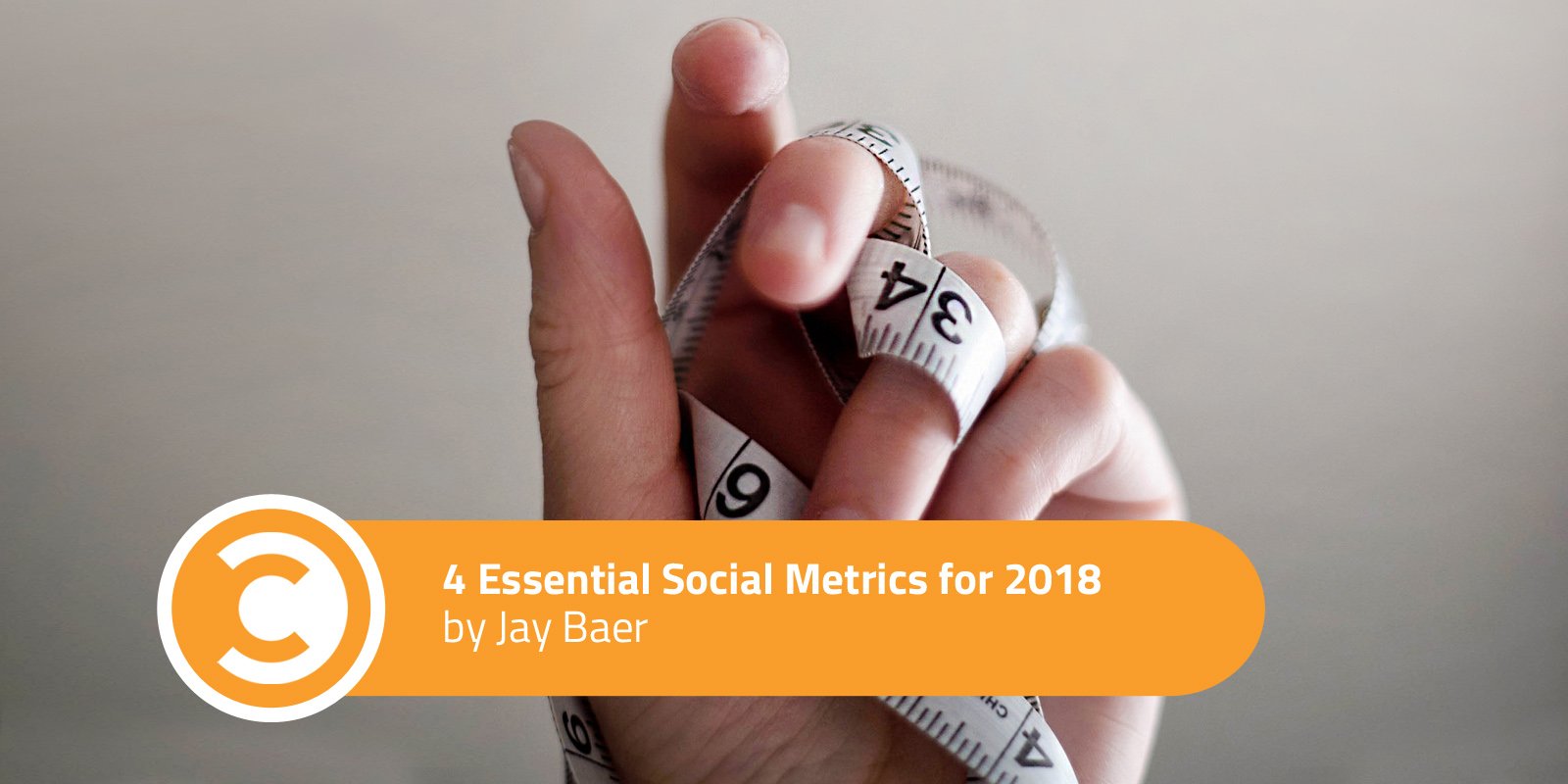
Once upon a time, social took up just a tiny corner in the world of marketing. Oftentimes, companies reluctantly threw a small percentage of their budget at it without really investing much in the way of staffing, strategy, or analytics. But as anyone knee-deep in the evolution of the industry knows, those days are gone.
Bypassing traditional customer service channels, social is now the channel of choice for consumers who want to reach out to and engage with brands. And those consumers have seriously high expectations: 53 percent of them expect a customer service response within an hour! The power of social now goes beyond simple brand awareness or reputation; it’s quantifiable dollars and cents.
Social will be a major part of most companies’ marketing strategies in 2018, but are you looking at the right metrics to measure your success in the social realm? If you’re evaluating the effectiveness of your campaigns based merely on page likes and clicks, I’m afraid you’re missing the boat.
I recently joined Jim Rudden, CMO of Spredfast, for a webinar breaking down how to best approach social planning and measurements this year. While social is the single most measurable form of marketing ever, that doesn’t mean we’re measuring it well. I’ve seen lots of mind-numbing social media scoreboards in my time! So how do we focus on the metrics that matter? Here are a few:
1. Post Volume
This one is crucial, and there is no one-size-fits-all approach to getting it right. The harsh reality is that there is no “neutral” in social. Every time you post—whether it’s a major campaign rollout or a response to a customer comment—it either builds or hurts your brand, so hitting on the right cadence is paramount.
Learning how to get in that “Goldilocks Zone” where everything is justttt right is a moving target. It will vary from brand to brand and channel to channel. And don’t think you can set it and forget it, either; you need to test and revise throughout the year to keep things fresh. You have to work to find where the decay point lies for your audience.
There is no 'neutral' in social. Click To Tweet
2. Relevancy Score
Social algorithms seem to be forever changing, and making sure your content is seen by your audience is getting harder and harder. A great way to ensure that your posts are getting the broadest reach possible is to make them hyper-relevant.
Much like Google’s system, Facebook now rates paid content. It’s on a scale of one to 10, and once your post has accrued 500 impressions, you’re assigned a score based on things like how often it is viewed, liked, and shared, as well as negatives like how often it’s hidden or reported.
Keeping an eye on these scores—and adjusting your content and approach accordingly—is the best way to get more eyes on your posts. If your content is effective, they’ll show it to more people. After all, it benefits both your brand and Facebook to deliver advertising that people want to see.
3. Video Minutes Viewed
Video content is quickly becoming one of the most effective weapons in the social toolbox. When it comes to tracking impact, though, the simple metric of how many views a video gets is virtually worthless, in my opinion. On Facebook, just three seconds constitutes a “view,” so it’s clear that we need to be far more nuanced about how we’re measuring engagement if we truly want to determine the success of video posts.
In addition to determining the total and average minutes watched, the dwell pattern can tell you all about where attention is dropping off for your viewers. This can be especially powerful if you have a call to action in your video that you want to make sure is reaching your viewers.
4. Post-Click Conversion Rate
Oftentimes, the goal of social content is to drive consumers back to your website to take part in a deeper engagement with your brand. Just looking at post clicks isn’t going to tell you if that’s happening consistently, though. What really matters is what happens after the click.
You can get 500 clicks on a post, but if the customer isn’t taking the next step and purchasing your product or interfacing with your form etc., then you’re not getting the job done. The percentage of conversions happening from those clicks is the real measure of how effective your content is in spurring the behaviors your brand wants to foster.
The most useful metrics for your business will vary based on your individual priorities and goals, of course, but these are a great starting place.
To go more in-depth on these and to hear about the other three vital metrics you’ll need to employ in order to properly measure your brand’s social impact in 2018, you can find Jim’s recap here and check out the Social Measurement in 2018 webinar.
This post is part of a paid sponsorship between Spredfast and Convince & Convert.

